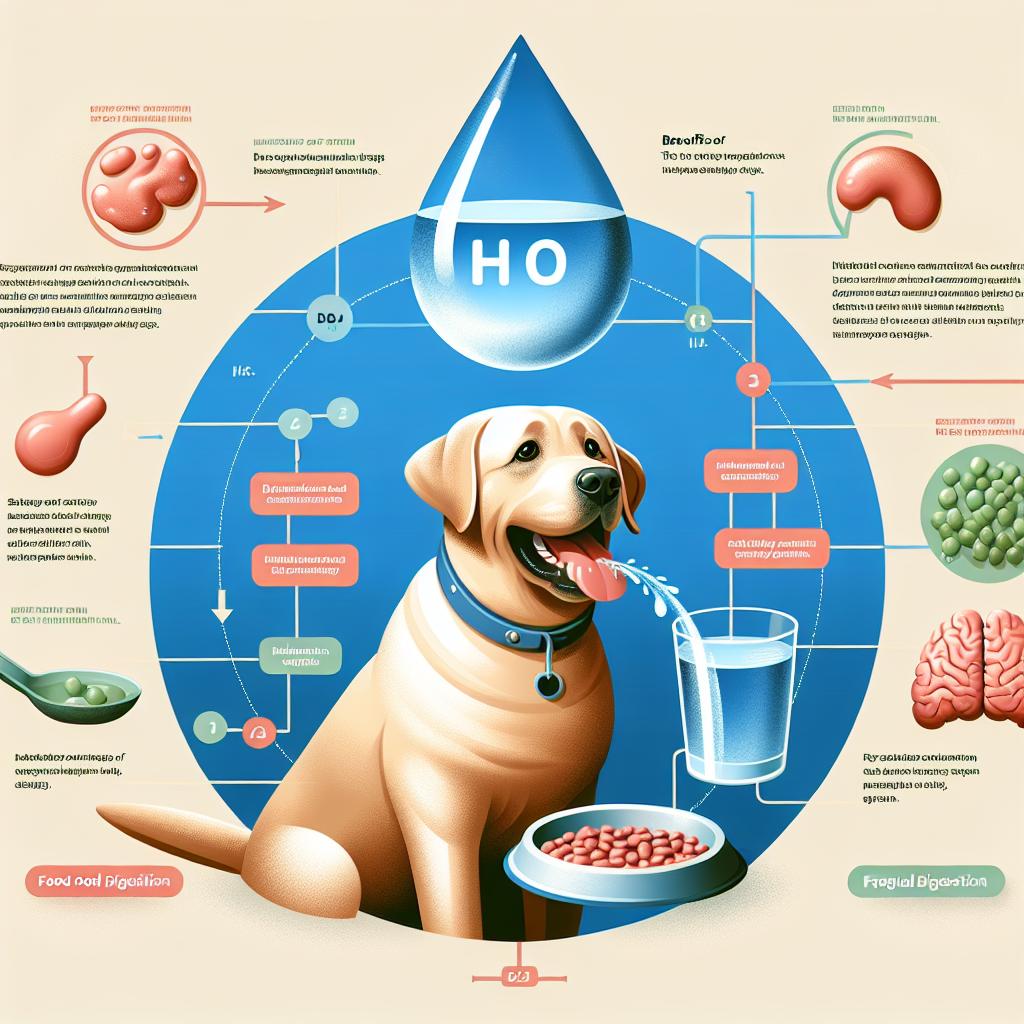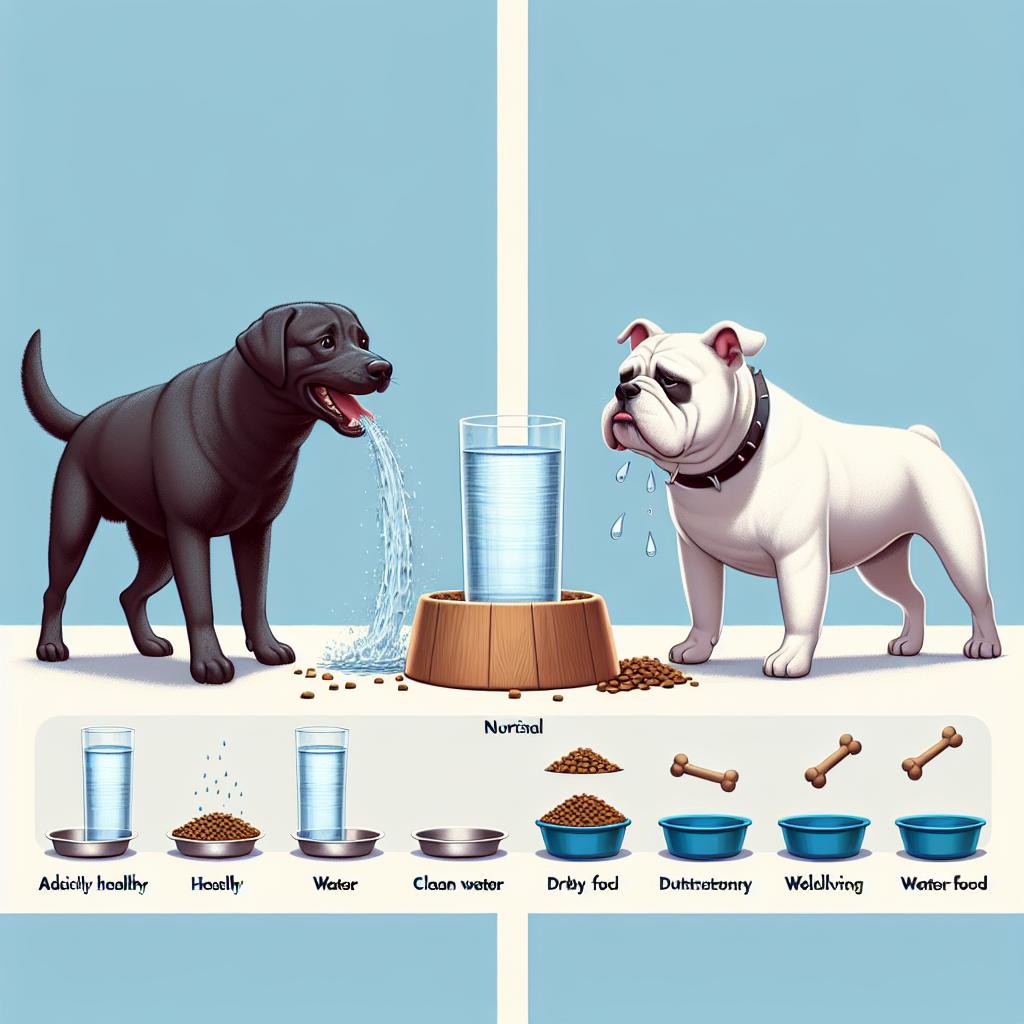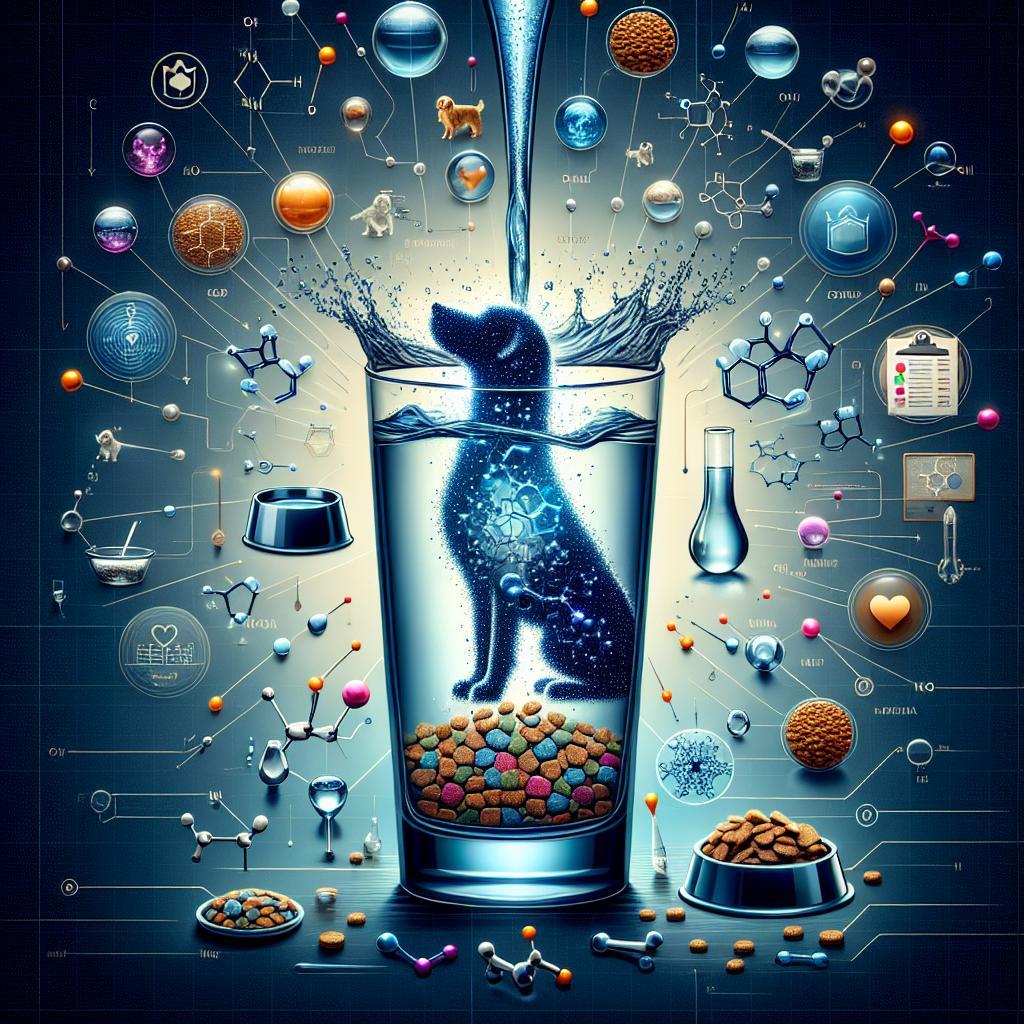The Importance of Hydration in Dog Nutrition
In a world where the latest pet food trends capture headlines and new dietary fads emerge with each season, one fundamental aspect of canine health often goes unnoticed: hydration. Just as a well-balanced diet is essential for our furry companions, the critical role of water in their overall well-being cannot be overstated. Often taken for granted, hydration serves as the invisible thread weaving through the tapestry of a dog’s nutrition, influencing everything from digestion and coat health to energy levels and vitality. In this article, we will explore the often-overlooked significance of hydration in dog nutrition, shedding light on how proper water intake not only complements their meals but also supports their physical and mental health. Join us as we unravel the science behind hydration and equip you with practical knowledge to ensure your four-legged friend remains content and healthy, one sip at a time.
Understanding Canine Hydration Needs
Understanding the hydration needs of our canine companions is essential for their overall health and well-being. Water plays a pivotal role in their physiology, influencing everything from digestion to temperature regulation. Unlike humans, dogs can be less adept at signaling their thirst, which makes it critical for pet owners to monitor their fluid intake consistently. Factors influencing a dog’s hydration requirements include:
- Size and Weight: Larger dogs naturally need more water.
- Activity Level: Active dogs lose more fluids through panting and perspiration.
- Diet: Dogs consuming dry kibble may need to drink more compared to those on wet food.
- Climate: Hot or humid weather increases the need for hydration.
To ensure your dog stays adequately hydrated, it can be helpful to track their water intake. Some pet owners find success by establishing routines or using measurements, such as providing fresh water in a clean bowl at regular intervals. You can also consider the following tips for promoting hydration:
- Add Flavor: A splash of low-sodium broth can make water more appealing.
- Monitor Water Bowls: Keep several water bowls around the house to encourage regular drinking.
- Hydration Snacks: Incorporate water-rich fruits and vegetables like cucumbers and watermelon into their diet.

The Role of Water in Digestive Health
Water acts as a vital facilitator in the complex process of digestion for dogs. It not only helps to break down food but also supports the absorption of essential nutrients. Adequate hydration ensures that digestive enzymes can function properly, allowing for efficient nutrient breakdown and assimilation. Furthermore, water helps to move food through the gastrointestinal tract, preventing gastrointestinal issues such as constipation. When a dog is well-hydrated, it promotes the proper secretion of mucus, which protects the stomach lining and aids in smoother digestion.
Another significant aspect of water’s role in digestive health is its contribution to maintaining a balanced gut environment. Sufficient fluid intake promotes healthy fecal consistency, which can reduce the likelihood of digestive disturbances. Additionally, hydration supports the growth of beneficial gut bacteria that aid in breaking down food, enhancing overall digestive efficiency. A dog’s hydration status can be assessed by monitoring variations in their appetite, stool quality, and overall energy levels, ensuring that their digestive system functions optimally.

Signs of Dehydration and How to Prevent It
Recognizing the signs of dehydration in dogs is crucial for their well-being, as even mild dehydration can lead to serious health issues. Some common indicators to look out for include:
- Dry or sticky gums: Healthy gums should be moist and pink.
- Excessively thirsty: A dog may drink more water than usual if it is dehydrated.
- Loss of skin elasticity: Gently pinch the skin between the shoulder blades; if it doesn’t return quickly, it may indicate dehydration.
- Fatigue or lethargy: A dehydrated dog may seem less active than normal.
- Sunken eyes: Dryness can make a dog’s eyes appear sunken and dull.
To prevent dehydration, it’s essential to ensure your dog has constant access to fresh and clean water. Additionally, maintaining a balanced diet that includes moisture-rich foods can significantly contribute to their hydration levels. Here are some practical tips:
- Monitor water intake: Keep track of how much water your dog drinks daily.
- Encourage water play: Games involving water can increase your dog’s interest in drinking.
- Provide wet food: Incorporating canned dog food can boost hydration.
- Regular vet check-ups: Monitoring your dog’s health can help catch any signs of dehydration early.

Tips for Encouraging Your Dog to Drink More Water
Keeping your furry friend hydrated is vital, but getting them to drink enough water can sometimes be a challenge. Here are some effective techniques to encourage your dog to quench their thirst:
- Freshen It Up: Change your dog’s water frequently, ideally at least once a day, to keep it fresh and appealing.
- Flavor it: Adding a splash of low-sodium broth or a dog-safe flavor enhancer can entice your pup to drink more.
- Ice Cubes: Some dogs love to chew ice cubes. You can even freeze some of their favorite treats inside for extra fun.
- Interactive Bowls: Invest in a drinking fountain or a bowl that helps move water around. Many dogs are drawn to moving water.
Recognizing behavioral cues can also help in encouraging hydration. If your dog seems lethargic or has dry gums, it may be time to boost their water intake. Watch for signs of dehydration and consider the following tactics:
- Portion Control: Provide smaller, frequent bowls of water around the house to ensure they have easy access at all times.
- Routine: Incorporate water breaks into your dog’s daily routine, especially after playtime or walks.
- Wet Food: Incorporate wet or canned foods into their diet as these often contain more moisture.
- Positive Reinforcement: Praise or reward your pet when they drink, creating a positive association with hydration.
Q&A
Q&A: The Importance of Hydration in Dog Nutrition
Q1: Why is hydration important for dogs in the first place?
A1: Just like humans, dogs are made up of approximately 60-70% water. Hydration plays a critical role in every bodily function, from digestion and circulation to temperature regulation and waste elimination. A well-hydrated dog is not only lively and energetic but also less prone to health issues.
Q2: How much water should my dog be drinking daily?
A2: The general rule of thumb is that dogs should drink about one ounce of water per pound of body weight each day. However, factors such as activity level, age, and environmental conditions can influence this need. Always keep fresh water available and monitor your dog’s intake to ensure they are staying adequately hydrated.
Q3: What are some signs that my dog may be dehydrated?
A3: Dehydration can manifest in various ways. Watch for symptoms such as excessive panting, lethargy, dry gums, loss of skin elasticity, and sunken eyes. If you notice these signs, it’s essential to encourage your dog to drink water and consult a veterinarian if symptoms persist.
Q4: Can the type of food I give my dog affect their hydration?
A4: Absolutely! Dogs that eat dry kibble may require more water than those who consume wet or canned food, which contains higher moisture content. Some pet owners opt for a combination of both to ensure their furry friends receive adequate hydration in their diet.
Q5: Are there creative ways to encourage my dog to drink more water?
A5: Indeed! You can try adding low-sodium broth to their water bowl, offering ice cubes as a treat, or using dog-friendly water fountains to make drinking more enticing. You can also incorporate water-rich fruits and vegetables, like cucumbers or watermelon, into their diet—just be sure to avoid harmful options like grapes and onions.
Q6: How does hydration impact exercise and overall health in dogs?
A6: Adequate hydration is vital during exercise, as it helps regulate body temperature and supports stamina. If a dog is dehydrated during physical activities, it can lead to fatigue and even serious health complications. Regular hydration, therefore, contributes to a healthy, active lifestyle for your canine companion.
Q7: Can my dog get too much water?
A7: While it’s essential to provide access to fresh water, it’s also possible for dogs to overhydrate, a condition known as water intoxication. This is rare but can be dangerous. Signs include bloating and lethargy. If you suspect your dog is drinking excessively, it’s best to consult a veterinarian.
Q8: Is it different for puppies and senior dogs?
A8: Yes, both puppies and senior dogs may have unique hydration needs. Puppies often require more fluids relative to their size due to their high growth rate, while older dogs might need extra encouragement to drink, as their senses may decline. It’s crucial to monitor both ends of the age spectrum for proper hydration.
Q9: What’s the best way to ensure my dog stays hydrated while traveling?
A9: When traveling, always bring water from home to avoid upsetting your dog’s stomach. Portable water bowls and collapsible containers can be lifesavers. Offer water breaks frequently and remember to maintain a consistent schedule—just like at home—to keep your dog hydrated on the go.
Q10: How can I tell if the hydration methods I’m using are effective?
A10: Keeping an eye on your dog’s energy levels, coat condition, and overall mood can indicate their hydration status. Regular vet check-ups can also help monitor your dog’s hydration and overall health. If you notice improvements in these areas, your hydration methods are likely on the right track!
In Summary
as we navigate the intricate world of dog nutrition, one vital element stands out—hydration. Just as water is essential to our own health, it plays an equally crucial role in the well-being of our furry companions. By ensuring that our dogs stay well-hydrated, we contribute to their overall health, energy levels, and quality of life. Whether it’s through fresh, clean water or hydrating foods, prioritizing hydration is an easy yet powerful way to enhance your dog’s diet. As responsible pet owners, let us remain vigilant in recognizing the signs of dehydration and making conscious choices that promote a hydration-rich lifestyle for our beloved pets. After all, a well-hydrated dog is a happy, vibrant companion ready to fill our lives with joy and adventure. So, let’s raise a bowl to hydration—a simple commitment that paves the way for a healthier, happier dog!

